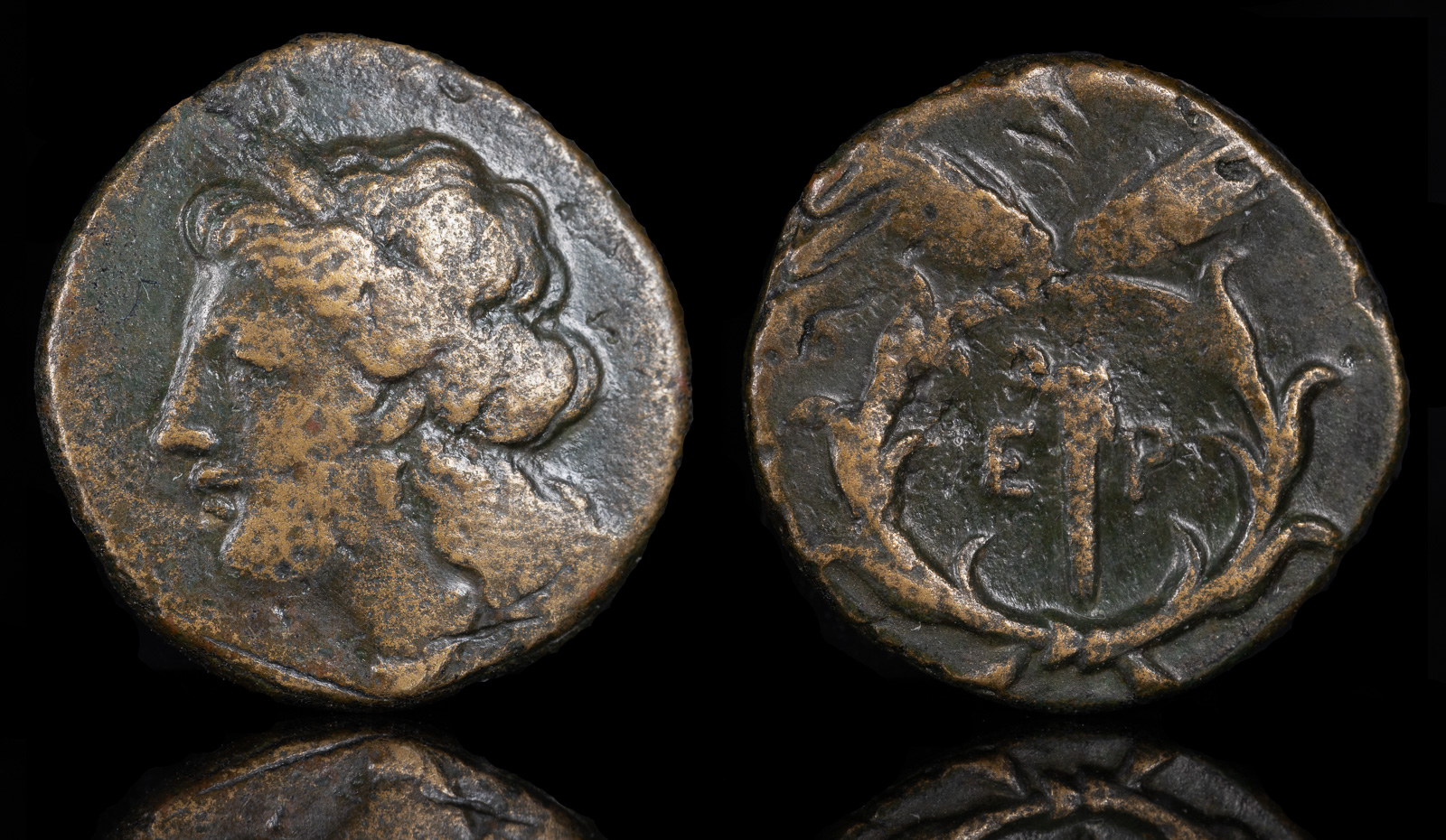Chthonia
View All Tags
The object most worthy of mention is a sanctuary of Demeter on Pron. This sanctuary is said by the Hermionians to have been founded by Clymenus, son of Phoroneus, and Chthonia, sister of Clymenus. But the Argive account is that when Demeter came to Argolis, while Atheras and Mysius afforded hospitality to the goddess, Colontas neither received her into his home nor paid her any other mark of respect. His daughter Chthonia disapproved of this conduct. They say that Colontas was punished by being burnt up along with his house, while Chthonia was brought to Hermion by Demeter, and made the sanctuary for the Hermionians.
At any rate, the goddess herself is called Chthonia, and Chthonia is the name of the festival they hold in the summer of every year. The manner of it is this. The procession is headed by the priests of the gods and by all those who hold the annual magistracies; these are followed by both men and women. It is now a custom that some who are still children should honor the goddess in the procession. These are dressed in white, and wear wreaths upon their heads. Their wreaths are woven of the flower called by the natives cosmosandalon, which, from its size and color, seems to me to be an iris; it even has inscribed upon it the same letters of mourning.
Those who form the procession are followed by men leading from the herd a full-grown cow, fastened with ropes, and still untamed and frisky. Having driven the cow to the temple, some loose her from the ropes that she may rush into the sanctuary, others, who hitherto have been holding the doors open, when they see the cow within the temple, close the doors.
Four old women, left behind inside, are they who dispatch the cow. Whichever gets the chance cuts the throat of the cow with a sickle. Afterwards the doors are opened, and those who are appointed drive up a second cow, and a third after that, and yet a fourth. All are dispatched in the same way by the old women, and the sacrifice has yet another strange feature. On whichever of her sides the first cow falls, all the others must fall on the same.
Such is the manner in which the sacrifice is performed by the Hermionians. Before the temple stand a few statues of the women who have served Demeter as her priestess, and on passing inside you see seats on which the old women wait for the cows to be driven in one by one, and images, of no great age, of Athena and Demeter. But the thing itself that they worship more than all else, I never saw, nor yet has any other man, whether stranger or Hermionian. The old women may keep their knowledge of its nature to themselves.
There is also another temple, all round which stand statues. This temple is right opposite that of Chthonia, and is called that of Clymenus, and they sacrifice to Clymenus here. I do not believe that Clymenus was an Argive who came to Hermion “Clymenus” is the surname of the god, whoever legend says is king in the underworld.

Argolis, Hermione
Circa 360-310 BCE
14.46mm 2.26g
Obverse: Head of Demeter Chthonia left
Reverse: Torch flanked by E-P, all within wreath
BCD Peloponnesos 1297
Ex BCD Collection (not in LHS sale)